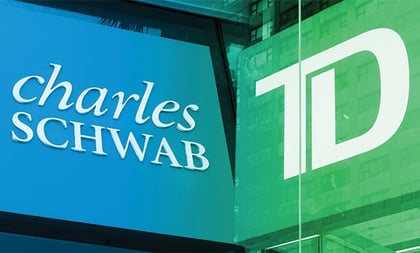Charles Schwab says its integration of TD Ameritrade is expected to take 18 to 36 months to complete, following the planned closing of its transaction on Tuesday.
This timeline, disclosed late Wednesday after the Federal Reserve approved the $26 billion deal, means the technology tie-up and related efforts won’t be done until April 2022 at the earliest and by October 2023 at the latest.
Many industry veterans, though, believe the integration is so large and complex that the shorter schedule is unrealistic. Here’s why.
A ‘Massive Project’
“Look, this is a massive project. It will take time, and it will be done, presumably in phases,” said Joel Bruckenstein, head of Technology Tools for Today.
“You have the core custodial technologies and everything else,” he explained, adding: “Custodial technology at Schwab is strong, and advisors will be moving onto that platform.”
However, “there are a few gaps,” Bruckenstein said, pointing to the fact that, “for some inexplicable reason, Schwab does not allow a Roth option on their Solo 401(k) plans” — a situation several advisors have mentioned to him.
“Schwab will clean up these discrepancies in product and in technology,” he added, but other parts of the integration “will move at a different pace, depending on the priority.”
For example, “Clearly, options trading is important to many, so I would hope that is a priority; ditto for iRebal,” the technology expert said, referring to TD Ameritrade’s rebalancing tool.
Big Scope, Scale
Tim Welsh, head of the consultancy Nexus Strategy and a former Schwab executive, said: “I definitely think it’ll trend towards the longer end of that [18-36 month] spectrum … just because of the scope, scale and complexity involved.”
“You’re merging two very large companies, massive client bases, different technologies, different organizational structures. All of those things just take a long time to play out,” Welsh said. “The last thing you want to do is just ram [things] together and just have a very disjointed client experience.”
Yet, as the process drags on, moving slowly “just draws out more uncertainty,” Welsh said. Plus, the longer you take, the more questions get asked” by RIA and investor clients, who may be exploring options offered by other providers.
Regardless of how long the integration takes, Welsh noted some kinks will have to be worked out once the integrated platform launches and clients start using it — especially in light of the need of the system to handle massive trading traffic, Welsh said.








 October 01, 2020 at 03:14 PM
October 01, 2020 at 03:14 PM












 Copyright © 2024 ALM Global, LLC. All Rights Reserved.
Copyright © 2024 ALM Global, LLC. All Rights Reserved.